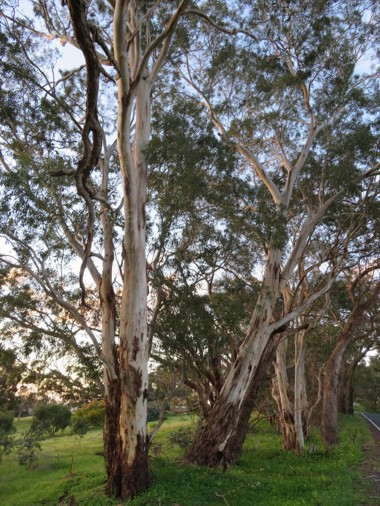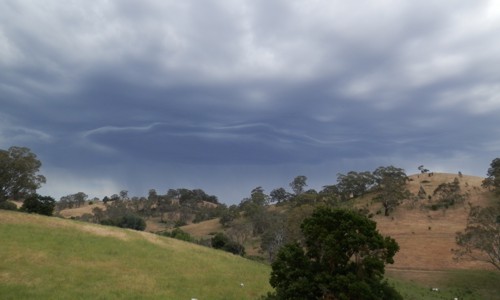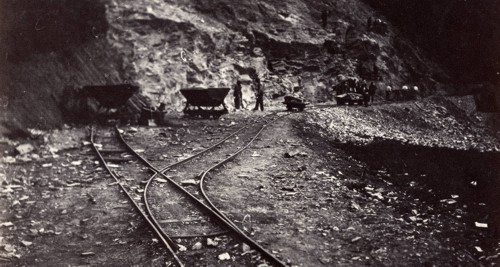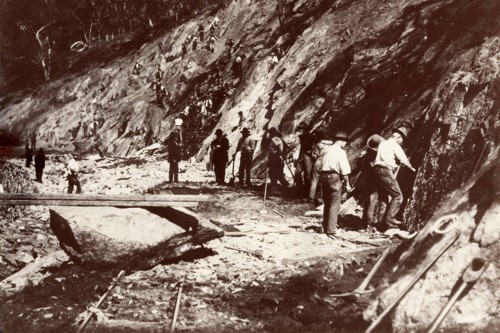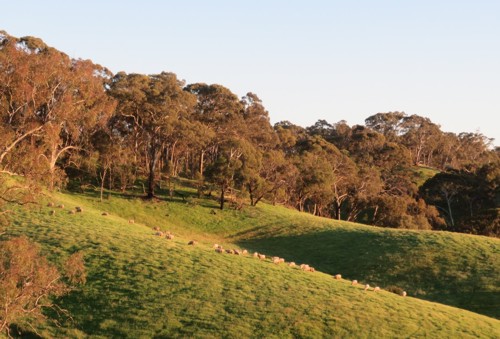The Road to Gumeracha
Anyone who is familiar with the Adelaide Hills knows what a beautiful drive up from the city and suburbs it is. For those who aren’t think rolling green hills everywhere, except in Summer when they’re brown, with plenty of big beautiful gum trees around. There are crops and vineyards, sheep, and cattle. It’s the country, and it’s what I grew up with!
I found an article in South Australia’s Register newspaper, from 20 January 1920, where the writer takes a trip from Athelstone through the hills to Gumeracha, and describes the journey. So I wanted to share a portion of that with you. To read the full article, click here.
An Entrancing Corridor
If an unlabelled moving picture of the Gorge road were thrown on the screen people would ask where it was. The route is an eye-opener in rugged beauty. For most of the 17 miles, from the time the gateway is entered at Athelstone, the track runs between massive, rock-ribbed, tree-spread cliffs which climb hundreds of feet, and seem to meet the blue sky. From the moment you get into contact with the great panorama, it is a wonderland of wild, decorative effects, carried out by Nature to big scale. The road has the appearance of a bold, tiny interloper, twisting in and out among the boulders with flimsy, and almost precarious, audacity. Looking up on one side you see the hills, mottled by shadows on a sunny afternoon, lean their grey bulk against a radiant back ground. On the other the jagged, broken rock offers, at times, a rather uncomfortable proximity, supplying a striking colour contrast with their red and dark blue and brown faces. Running along this 24-ft. thoroughfare, amid some of the most impressive open-air sculpture to be seen in Australia, you involuntarily duck now and then, in expectation of being hit by one of these giant fists. Then, right underneath, flows with placid grace, the little creek, framed in brilliant green rushes or tender fern. When the towering avenues disappear, as it were, into the wings of this magnificent stage, there come through the scattered gums glimpses of fruit gardens, designed as symmetrically as a draughtboard, or arranged in marvellous rows of potato and tomato plants, suggesting the faultless elegance of the top lines in a copy book. So you get on this excursion up the Gorge road, the blend of dainty, man-made utilities and the moving grandeur of God-made scenery.
—An Exhilarating Experience—
The picturesqueness of this 17-mile journey has a unique balance. The approach through the graceful porch of Athelstone is by a road which is like a long key unlocking the hidden treasures. Once inside the traversing of the long corridor is a thrilling experience. The bends are easy to negotiate, with here and there just sufficient swerve to impart an exhilarating feeling. The hills mount in a precipitous stairway, to six or seven hundred feet, but the creek below is within 20 and 30 feet. The whole situation has features calculated to make the driver of a motor or other vehicle keep his wits awake – and judgment on the alert, but ordinary skill and common-sense are all that is needed for a safe passage. There were places which we skirted, at rather a giddy angle – a matter of some inches between a dry ride and a good ducking. This is easily the biggest thing in roads ever undertaken by the department.—Two Official Triumphs—
Millbrook and the Gorge road are two official triumphs. In a sense, each made the other, and this accomplishment of interdependence seems to be sustained in the fact that the track is carrying about seven miles of the pipes. The finest and longest scenic road in South Australia, and the greatest and most elegant reservoir are sister undertakings. It is a singularly happy circumstance. Each picturesque and utilitarian. The people of the metropolitan area want the water, and the producers of the hills need the road. This link with Gumeracha is almost better than a railway, or it will do for the present, at any rate. The market gardeners, Mr. Fleming told me, do not have to guide their horses when they use the gorge highway — they just drop the reins, and the horses and the grade do the rest. It is merely a case of round and round, and through the everlasting hills to the city.— Long and Costly —
Of course, they have been six years building this road. The long war and short money are the explanations. There might have been still further delay, when things got better if Millbrook had not pushed the business on. Adelaide wanted the water. It meant that, for about seven miles, the laying of the pipes and the construction of the track, which was blasted out of the solid rock, had to go hand in hand. It will be 13 months or two years before the road is completed for its full length. The original estimate was £75.000, but the actual expenditure will be nearer £200.000. Everything is dearer. When the Gorge road was started, wages were 8/-a day; now they are 13/3, with a shilling camp allowance. The outlay on materials has also advanced considerably, but the work had to go on. So many as 400 men have been engaged at one time. The road is 3 ft. wider than intended in the first place, and five reinforced concrete bridges have had to be erected: These alone have cost more than £30,000. Each has been given a local name, by which they will be familiarly known. The structures combine beauty of line with unchallengeable strength.— Rugged Corridor —
We motored over the entire distance, entering the rugged corridor at Athelstone, and finishing at the old Gumeracha Bridge after a journey which was a feast for the eye and a tonic for the body. We saw gums, red, and blue, and white, in all the glory of their own stately grouping, and passed masses of the young stuff the colour of saltbush. Alternating the heavy beauty of the towering cliffs was the ordered grace of nestling gardens, tucked shyly in the gullies, or scaling the lower slopes. The sun glistened on the young leaves, and painted birds sang and danced in their own fairyland. Then, on the homeward journey we skirted sparkling Millbrook whose waters played hide and seek among the hills, and spread about with the careless symmetry of a miniature harbour.
Sounds idyllic? It is.
In that last paragraph it says the trip to Gumeracha is “a feast for the eye and a tonic for the body”. And in my words I would say “good for the soul”.
South Australia’s History Festival 2019 – Let the Fun Begin!!
May is the month that all South Australian history-lovers and genealogists look forward to, as it is South Australia’s History Festival, which really is just a month-long history-fest!
And this year we get a whole month PLUS a few days, as the History Festival kicks off this coming weekend, (Saturday 27 April) with the Open Doors weekend which gives you a choice of 50 places to check out.
This is then followed by over 700 events from 400 organisers held all over the State throughout May.
Every year is BIG, but even before this one has begun, the organisers have announced that this year’s history month is offically the BIGGEST EVER.
South Australia’s History Festival is presented by the History Trust of South Australia, and began its life as South Australia’s History Week back in 2004, and changed to a month-long event in 2011, and what a great move that’s been. Though seriously a month STILL isn’t long enough to cram in all the events I want to get to, but I won’t complain, as I know we’re very lucky.
Anyway the program that is jam-packed with events, covering all corners of the State, and there’s oodles for the genealogy and history buff to enjoy, and even those not so much into history as well.
There are tours galore (bus tours, guided walking tours, self-guided tours, even ghost tours), open days, seminars, displays, workshops, exhibitions, book launches, workshops, treasure hunts and so much more … even an escape room!
This year I’ve booked in for 10 events, and am looking forward to those. I have some archive tours, a few talks, a day seminar, a book launch, an escape room, and a treasure hunt too. As I’ll be cramming these around my day job, I have had to stop looking at the program, as there is just too much I want to go to. But 10 events isn’t too bad an effort, and I’ll write about all in due course.
 One great thing about the South Australian History Festival, is that it really is State-wide and not just Adelaide. You’ll find oodles of events on in the Adelaide Hills, the Barossa, the Peninsula’s, and even on Kangaroo Island, all of which all so many more people to learn about the history of this beautiful state of ours.
One great thing about the South Australian History Festival, is that it really is State-wide and not just Adelaide. You’ll find oodles of events on in the Adelaide Hills, the Barossa, the Peninsula’s, and even on Kangaroo Island, all of which all so many more people to learn about the history of this beautiful state of ours.
My advice to you if you’re in South Australia, do yourself a favour, check out the South Australian History Festival website, and I bet you’ll find something you’d love to go to. Browse by date, or type of event, or simply search and see what you come up with. You’ll find something, I guarantee it.
All 700+ events are listed there, and they have a planner so you can keep track of what you’re wanting to attend. I find that very handy indeed!!
Anyway, for more on South Australia’s History Festival, check out their website, and elsewhere on social media!
Web: www.historyfestival.sa.gov.au
Facebook: www.facebook.com/HistoryFestival
Twitter: @historyfestival
Instagram: instagram.com/historyfestival
Hashtag: #SAHistoryFest
1 February 1895 – The Day Time Stood Still in South Australia
At midnight on 1 February 1895, clocks were stopped, and time stood still in South Australia so as to bring the State (or colony as it was then) into line with international standard times.
Actually this was an Australia-wide change as up to this time, each colony had followed their own time set at a local observatory in their capital city.
A long article in the South Australian Register, Thursday 31 January 1895, starts off with the following:
“To-night the process of marking that period which Hamlet calls ‘the very witching time of night’ will be exceptionally puzzling throughout the greater part of Australia. By the provisions of the Standard Time Act the Legislatures of five colonies have taken the liberty of declaring that an hour shall not be sixty minutes in duration, but something else, varying in different localities with the ‘ hour-zone’ in which those localities happen to lie. Thus, in South Australia the space from 11 o’clock till 12 p.m. of this 31st of January will be seventy four minutes twenty and two fifth seconds. In other words all clocks and watches, in order that they may indicate the correct time to-morrow, must be put back fourteen minutes twenty and two-fifth seconds.”
So as far as South Australia was concerned the clocks stopped at midnight for 14 minutes and 20 seconds, bringing it in line with the 135th meridian, and adopting Central Standard Time.
The article continues …
“In this colony we have to put our clocks back, and therefore we gain time; but in Victoria, as in New South Wales, Queensland, and Tasmania, the people are to lose time and the Victorians in particular do not appear to relish the idea, although, of course, it is a nominal loss and nothing more … “
The eastern states actually only lost 5 minutes, bringing it in line with the 150th meridian.
“The main fact now to be borne in mind by commercial men and the general public is that the time of all the eastern colonies will henceforward be exactly one hour ahead of that of South Australia …”
So it is true to say that back in 1895, time in Adelaide, or more precisely South Australia, really did stay still!
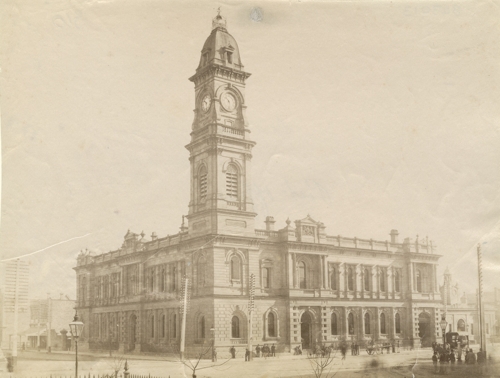
General Post Office with the very prominent clock tower, King William Street, Adelaide, 1885 [State Library of South Australia, ref: B-43013]
The “Fitzjames”, South Australia’s Floating Prison
A largely unknown piece of South Australia’s history is the fact that there was a prison ship (or hulk) anchored just off of Port Adelaide at Largs Bay. While we’ve heard of them in the UK, who knew that Australia had them too?
In 1876, the ‘Fitzjames’ a ship of 1,200 tons, was purchased by the South Australian Government from Mr Donaldson in Melbourne, and cost them £2,800. It was bought with the intention to use it as a quarantine ship. There’s more about this in the Evening Journal, 15 April 1876 …
“She will be moored near the North Arm, and will be used for patients while the cottage on Torrens Island will be fitted up and set apart for the convalescents. In view of the large influx of population to the colony it is important to have ample quarantine accommodation and the arrangements are now in progress will secure this without the delay which would be caused by waiting for the erection of suitable buildings.”
However by 1880 and through until 1891, the ‘Fitzjames’ served as a “Reformatory” for over 100 young boys aged from 8 through to 16.
From the Evening Journal dated 11 June 1879 …
“… if the hulk Fitzjames were not required for quarantine purposes after the buildings on Torrens Island were completed the Government would consider the advisability of converting her into a training-ship for Reformatory boys”
The first boys to call the Fitzjames home, were ones transferred from the Boys’ Reformatory at Magill in March 1880. Some had committed serious crimes, while others were guilty of petty theft, or simply deemed uncontrollable.
The inspection reports which you’ll find in the newspapers, generally give a fairly favourable report, as well as giving an idea of what the boys’ day was like. So while it’s been called a ‘prison ship’ or ‘prison hulk’, the descriptions doesn’t exactly make it sound prison-like, so I’m thinking ‘reformatory hulk’ would be a more accurate term.
Anyway here’s a snippet from the The Express and Telepgraph newspaper, dated 4 February 1887 written by the Inspector-General of Schools, Mr L.W. Stanton when he visited. Click on the link above for the full report.
“I visited the hulk Fitzjames on the 21st instant, and remained from 10.30 till 2.50. My visit was quite unexpected, and I found a majority of the boys at school and under perfect control. Those absent were engaged at work in the tailor’s and shoemaker’s shops for the morning; they attended school in the afternoon. I was informed they were all over 13 years of age, and that they received instructions from the teacher on three afternoons per week. Those under 13 attended full time. There were present in the morning 35, and in the afternoon 61, The furniture and apparatus were scrupulously clean. There was a satisfactory supply of reading books, copy books, exercise books, slates, and minor requirements, I noticed no maps, there being no place to hang any. … I found that the tuition was carried out on the lines of the standard for our public and provisional schools, and that the master had an ‘intelligent grasp of the work there laid down. … I was on the whole favorably impressed with Mr. Schrader’s work, and that I am satisfied of his fitness for his post, his industry, and his conscientious discharge of his duty. He appeared to me to control the boys with a proper degree of mildness combined with firmness, and they on their side seemed respectful, orderly, intelligent, and happy.”
However not all was great, as this report in Evening Journal from 15 November 1884 tells us …
The Commission took evidence with regard to the safety of the hulk Fitzjames, now lying at Largs Bay in deep water with sixty-four boys on board. The report read as follows:—” I have surveyed this vessel. I find the caulking below the copper very bad, in several places the oakum is completely decayed, being so bad that a rule can be pushed through from the back of the seams to the copper, and difficult to keep the ship afloat. I examined a leak on the starboard side in the lower hold, which was caused by a butt being open between two timbers. This has been temporarily stopped by wedging from inside. Through wedging one of the planks has been started from the timber nearly an inch, there by endangering the safety of the ship, as in heavy weather she must make a quantity of water. The top sides are much decayed, and planking under the copper must be bad, as in several places the nails have no hold on the planks to retain the sheets of copper from dropping off.
And the conditions continue to deteriorate, as the report from 30 June 1888 suggests …
The condition of the hulk was now worse than it was previous to the temporary repairs she underwent some time ago, and at the time he was writing there was over 3 feet of water in the hold, although the lads have been pumping morning and evening for over four hours each time, and this, considering their age and stamina, was far too great a strain on their constitutions, so he respectfully solicited the board’s interest and advice as to the immediate renovation of the vessel.
…as the timber for the vessel was cut 50 years ago she must be in a state of deterioration … She ought to be condemned …
By August 1891 they had given up on the vessel, and she was offered at a public auction with no reserve, and the Fitzjames hulk was sold for £130.
From emigrant ship, to cargo ship, to quarantine hulk, and then prison (or reformatory) hulk … she had seen it all.


